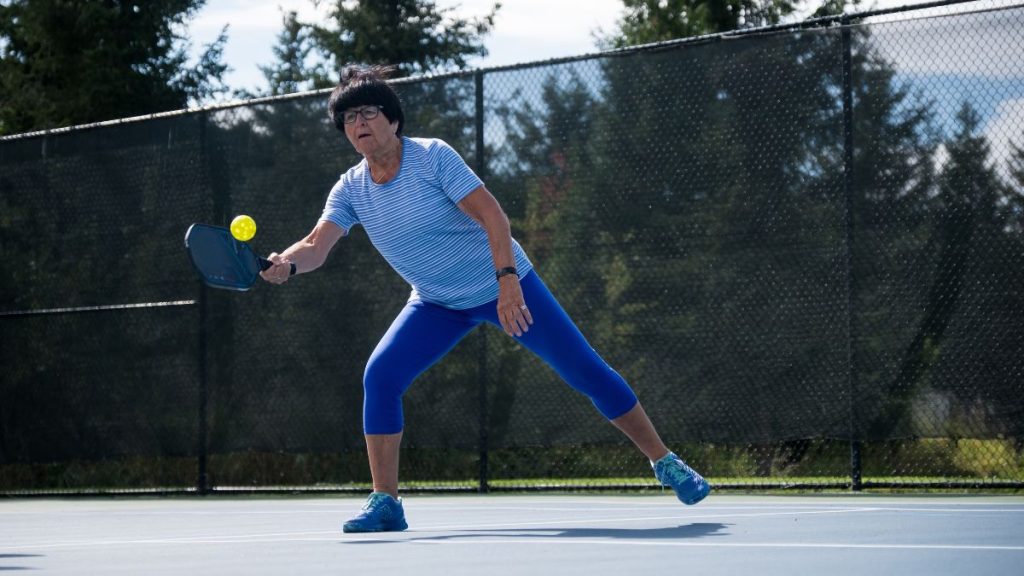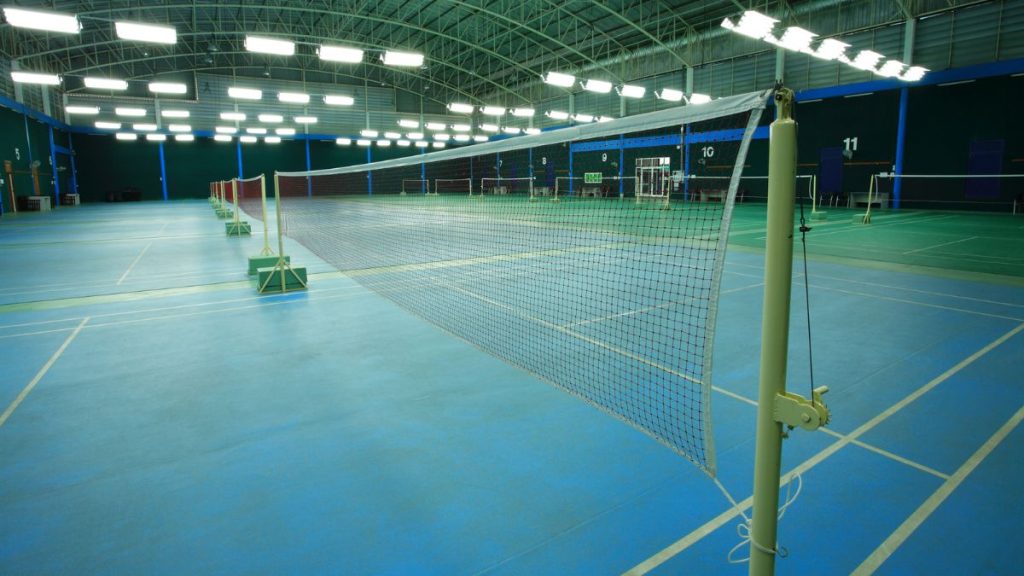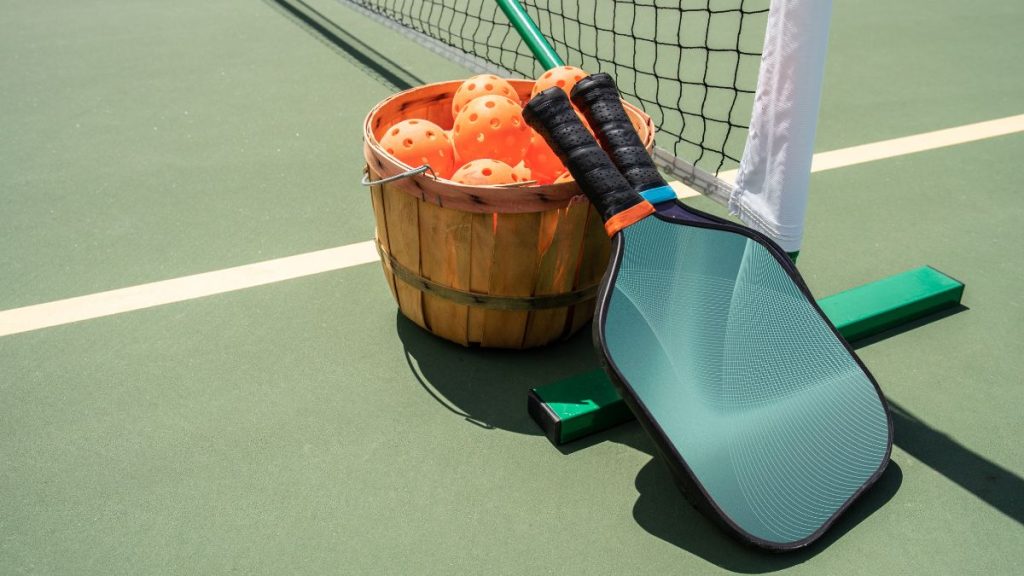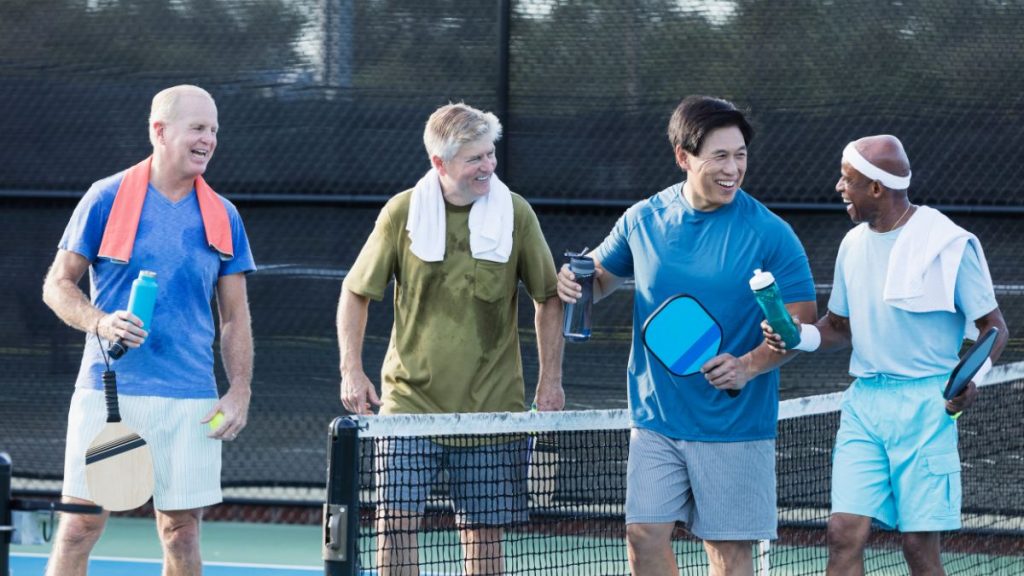Pickleball is a combination of certain elements from tennis and badminton. There are several similarities between these sports; one such similarity is the court.
Each of these three sports all have a rectangular court, though there’s a difference, and that is how the lines inside the court are drawn or structured. But apart from their appearance, the rules regarding their courts are also different. In particular, the positioning or where the players must stand on a pickleball court is different. So how do you know where to stand in pickleball?
The positioning depends entirely on what the player is doing. When serving, you must stand behind the baseline. You alternate between the left and right sides every time you serve the ball. When volleying or rallying, you must stand anywhere as long as you’re not in the non-volley zone. And finally, when receiving, you can stand anywhere.
Those are the rules for positioning in pickleball. Of course, that may not make sense if you aren’t aware of the different court parts, so let’s talk about that first.
Different Parts Of The Pickleball Court
First, it’s important to remember that a pickleball court is considerably smaller than a tennis court. A pickleball court is 44 feet long and 20 feet wide, whereas a tennis court is 78 feet long and 21 feet wide. A pickleball court has the same dimensions as a badminton court, though they have different structures or parts. Here’s a look at the different parts of the pickleball court:
- The sidelines are the two 44 feet long lines on each side of the court.
- The baselines are the two 20 feet long lines on each end of the court.
- The net is what separates the two sides and has a height of 3 feet.
- The non-volley lines are the lines 7 feet away from the net. It’s present on both sides of the court. The rectangle formed by the non-volley line, the net, and the sidelines is called the non-volley zone, also known as the kitchen. The two non-volley zones take up approximately 1/3 of the entire pickleball court.
- The centerlines are present on both sides, and it’s vertically in the middle of the two sidelines. It’s also horizontally between the baseline and the non-volley line. Each centerline is 15 feet long. The purpose of the centerlines is to separate the right and left service areas for each side of the court.
- The server will alternate between the right and left service areas.
If you’ve ever played badminton before, you’d know that their courts are fairly similar. The main difference is that the court for singles differs from the court for doubles in dimensions. Apart from that, the courts are the same: they have the same parts with different terms.
Where Should You Position In Pickleball?
As stated earlier, the positioning mostly depends on what you’re currently doing, whether serving, receiving, or volleying. Let’s start with your positioning when serving.
Where Do You Stand When Serving The Ball In Pickleball?
When you’re the server, you need to stand behind the baseline. You can be as far from it as you want, whatever you think is optimal. It may also be based on your preference. As for which side (left or right) you must stand on, it depends on your score. If your score is even, you must serve while standing on the right side. If your score is odd, you must serve while standing on the left side behind the baseline.
Keep in mind that it depends on the server’s score, and the receiver’s score has nothing to do with it. You can serve as far from the centerline as you want.
The rules allow you to serve as close to the centerline as possible or as far as possible, depending on your preferences or what you think is the optimal position.
If you’re the server’s partner, you can stand pretty much anywhere you want. The rule book says, “In doubles, apart from the server themselves, there are no restrictions on where any of the players must stand or position themselves in, as long as all four players from both teams are standing on their respective team’s side of the court. That’s pretty much the rule for positioning when serving.
Where Do You Stand When Receiving The Ball In Pickleball?
If you’re the receiver, you can stand anywhere you want, behind the baseline, between the baseline and the non-volley line, or even inside the non-volley zone.
Of course, there is optimal positioning, so you’ll often see a pattern in where receivers stand. One particular pattern you’ll see is that receivers often stand on the opposite side of the server. If they’re standing on the left side, for instance, the receiver will stand on the right side. That’s because it’s the optimal positioning.
Where Do You Stand When Volleying The Ball In Pickleball?
Volleying is the sequence of back-and-forth shots from one side of the court to another. It’s the pickleball name counterpart of rallying in tennis.
When volleying, players can stand anywhere as long as they’re still on their side of the court and outside the non-volley zone. That means you can stand beyond the baseline or sideline while volleying. Apart from that, there are no other restrictions on where you must stand while the volley is in progress.
There are really not many restrictions on where you stand in a pickleball match, but that doesn’t necessarily mean you “should“ stand anywhere as long as it’s allowed.
There are optimal positions that give you a better way to keep the volley going or to receive a point, and that’s what you’ll often see professional players using. However, as a beginner, it’s best to stick to what you want first before going over the optimal positions that give you the highest chance of success. But to clarify a few things, let’s take a look at the frequently-asked questions about pickleball positioning.
FAQs On Pickleball Positioning: For Beginners
What Is the First Thing You Must Do When Serving in Pickleball?
It can be said that the serving phase is arguably the most restricted part of the game in terms of positioning. When volleying or receiving, you can stand anywhere but the non-volley zone, but when serving, you can only stand behind the baseline. That can lead to many questions about what you must do to optimize your serving.
Well, for most players, the first thing they do when serving is choosing the specific spot they must serve. And yes, there are different places to choose from.
As previously mentioned, you can stand as far from the baseline as you want, but many players tend to position themselves as close to the baseline as possible. That’s so they can enter the court more easily, and the server can reach further, which is helpful since you must ensure the ball reaches beyond the other side’s non-volley zone. It’s also important not to get too close to not risk crossing the line.
You can also choose whether you want to be close to the centerline or not. Most players tend to be on the middle of the sideline and centerline to cover more space.
Can I Stand in the Kitchen in Pickleball?
The kitchen is another term for the non-volley zone; as the name suggests, you shouldn’t volley while standing in that area. So, no, you cannot stand in the kitchen in pickleball. The opponent will get a score if you do. If you drop your paddle or anything you own, like a pair of sunglasses or wallet, into the kitchen, the other team receives a point. There’s no going around this in an official match.
Moreover, even if you scored, if you set foot inside the kitchen while doing so, the other team will receive a point, and you won’t, even in the event of dead balls.
Keep in mind that this also counts toward the line itself. If you step on the line, even if your foot isn’t inside the zone, the team will receive a point. But remember that it’s prohibited only if you’re volleying the ball. You can stand in the kitchen if the ball is currently in the air, but since the game is fast-paced, you risk hitting the ball while still in the zone, so not many players ever stand in it unless necessary.
Why Do Pros Sometimes Hit the Ball While in the Kitchen?
You could volley the ball while standing in the kitchen if the ball bounced in the non-volley zone. This can happen if the ball hits the net, loses its momentum, and as a result, bounces in the non-volley zone. In that case, players can enter the kitchen without any consequence. The other team gets the point if they cannot return the ball.
Closing Thoughts
The positioning in pickleball is arguably the most difficult part of learning the game if you’ve played badminton, tennis, or similar sports before. That’s because it has a unique rule which prohibits the player from entering a relatively large portion of the court. The problem is that tennis and badminton players have no such rule, so their habits may push them to step on the non-volley zone while volleying.




